My day started when I awoke in a four-poster bed, in a room filled with antiques, in an 1820 mansion in Newburgh, NY. My charming innkeeper, Nancy Billman, grew up in the Goldsmith Denniston House as a little girl. Some years later, she and her husband bought the old place and, in an incredible labor of love, restored it from top to bottom. The results are guaranteed to make any admirer of historic buildings—for example, me!—beam with delight.

The view from my windows, although somewhat obscured by reflections from the early morning sun, revealed more striking houses along the street and the Hudson River in the distance.

Can you imagine a nicer front porch?

Or a more beautiful dining room?

In my case, having skipped most of lunch and dinner the day before in an effort to maximize my touring time, I was imagining how nice the breakfast might be—and, as it turned out, reality was even better than my drooling thoughts. Nancy had made several different kinds of bread (including an outstanding cinnamon roll), a plate of strawberries, blueberries, and watermelon, and an extraordinary fresh egg casserole.

Naturally I wanted to stay at the Goldsmith Denniston House forever, but I had a long day of motoring and touring ahead of me. With considerable reluctance, I packed up, thanked my hostess, and set out to explore Newburgh. Right off, I discovered that Nancy's B & B isn't the only striking house on the street. Her immediate neighbors are also quite impressive:


A mile further into the historic district brought me to the headquarters of George Washington during the American Revolution from April 1782 to August 1783 . This two-story stone house was built by Jonathan Hasbrouck in 1750. During the war, his widow Tryntje graciously offered it to General Washington and his senior officers. Martha Washington also lived here during most of this period. As evidence that not all political intrigue originates in Washington, DC, from these headquarters George firmly rejected the idea that he should be made King of a new American monarchy, and he also ended what could have been a disastrous military uprising against Congress through his Newburgh Address. The State of New York purchased this house in 1850, making it the first public historic site in the country. (Historic photos from the Library of Congress.)

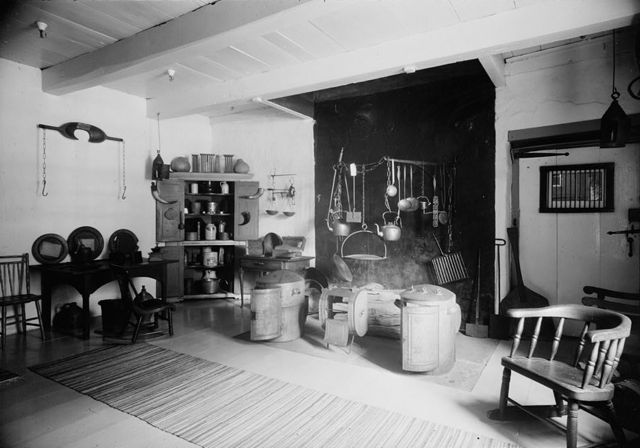
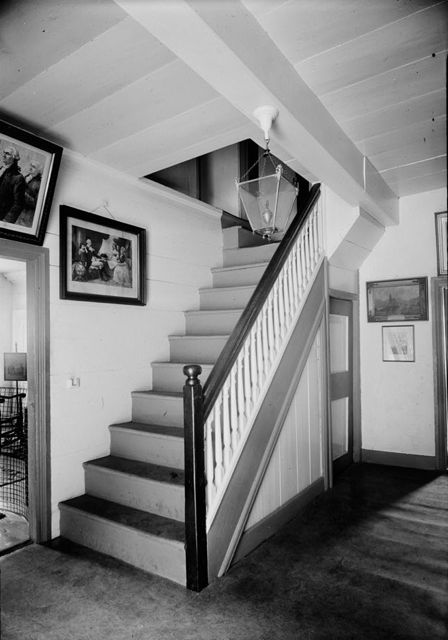
Nearby, I found the Old Dutch Reformed Church, built in 1835 and today in urgent need of restoration. I wasn't prepared for the scale of this church; imagine a 6-foot-tall person standing in front of the green entrance doors to the church, which are roughly 12 feet high. The place is 50 feet tall by 50 feet wide and 100 feet long. Through the efforts of the Newburgh Preservation Society (under president Nancy Billman's leadership—yes, my innkeeper from the Denniston House!), the church's foundations have been stabilized, the front columns restored, and one of its windows rebuilt.


The church used to stand out atop the Hudson River skyline, as shown on the right in this old engraving (courtesy of the Newburgh Preservation Society). The church's original dome and light were removed only 5 years after construction, possibly because they did not match the Greek Revival style (or maybe because they were about to fall off anyway; history doesn't tell us everything!)
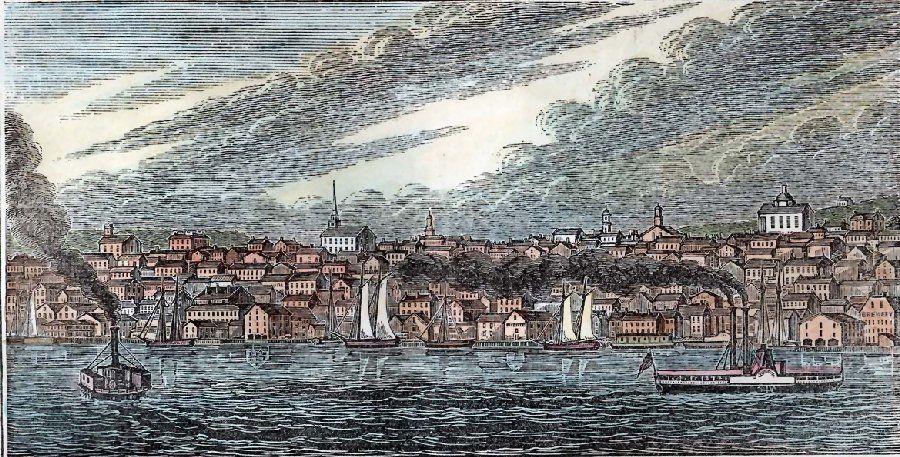
A 1950 hurricane blew the roof entirely off of the church, and by 1967 the congregation had moved out. The church was nearly demolished in the name of urban renewal but was saved through the concerted efforts of Newburgh's citizens. These 1967 photos from the Library of Congress show the exterior and interior of the church in somewhat better condition. As we hear so often these days, "much work remains to be done" to save this extraordinary structure, and it would benefit from your support if you're so inclined (see Contribution Form).
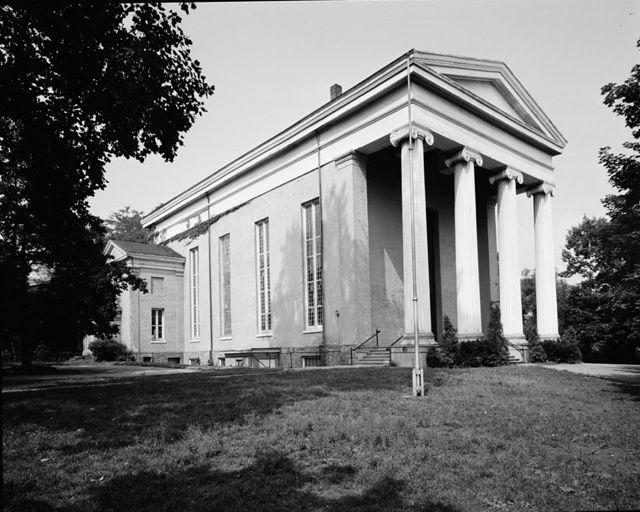
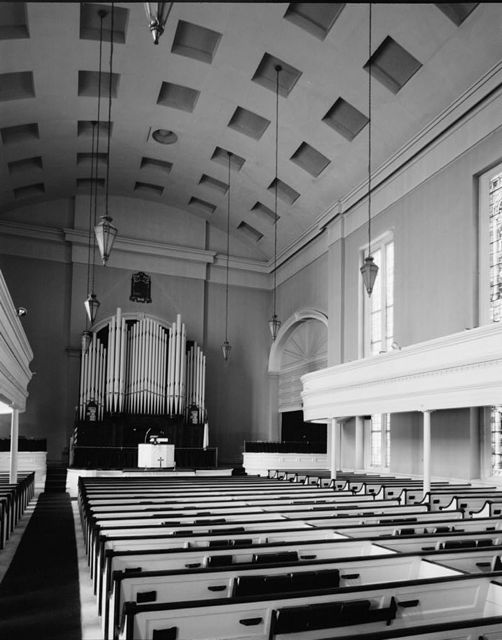
From Newburgh, I hustled on in the general direction of Connecticut. Near Redding, I stumbled across Putnam Memorial Park, marking the location of General Israel Putnum's troop encampments in the winters of 1778 and 1779 during the Revolution. George Washington positioned troops here to protect both the critical supply depot at Danbury and the army's fortress at West Point. The park was created in the late 1800s, with (scaled-down) blockhouses, a museum, soldiers' cabins, and a monument to the troops.

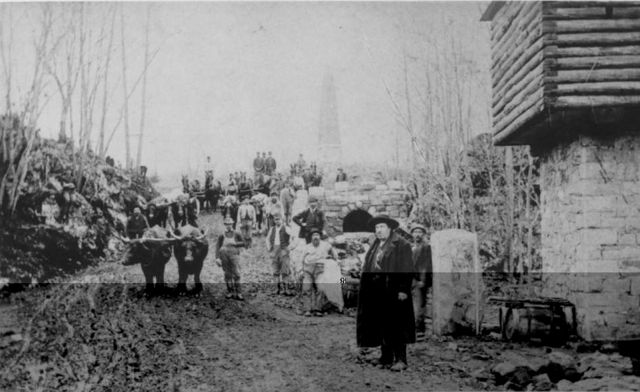
"Old Put," as he was known by then, was quite a character and had had a remarkable history of warfare. He was famous even as a child for putting bullies in their place, and he narrowly escaped being tortured and burned to death by Indians during the French and Indian Wars. He performed valiantly during the Battle of Bunker Hill, where he famously told his untested men, "Do not fire until you see the whites of their eyes!" During an attack on the winter encampment by 1,500 British troops, General Putnam and 150 colonial soldiers narrowly escaped. "Old Put" was the last to go and avoided capture only by charging his horse directly down a very steep flight of stone steps. Witnesses thought that no one could manage such a feat, but both general and horse survived to fight again. An exciting (if melodramatic) article about him is available from the Connecticut Society of the Sons of the American Revolution, from which the first painting is shown. The second is from Wikipedia and is probably a much more accurate representation of the General's headlong charge downhill.
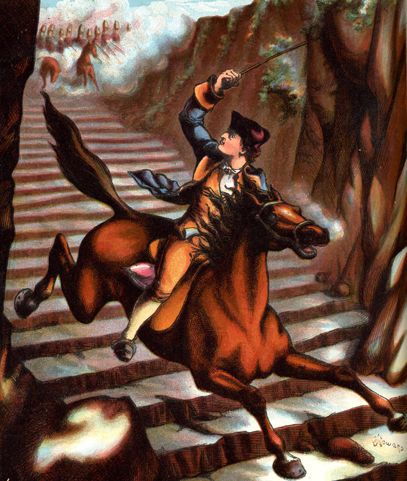
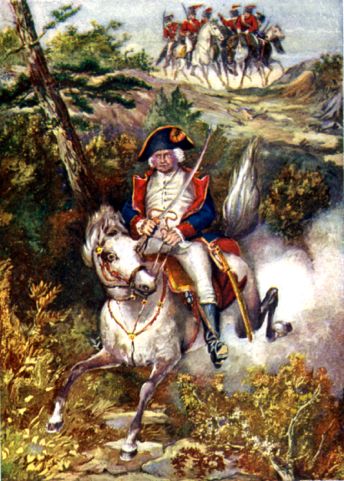
To commemorate General Putnam's extraordinary military career, Anna Hyatt Huntington sculpted this dramatic statue. Incredibly, she was 94 at the time!

After all the drama associated with Israel Putnam, it was a relief to find a quiet pond, one of many thousands in New England, formed about 18,000 years ago when glaciers from the last Ice Age retreated. Great blocks of ice remained, melted, and formed these "kettle ponds," which generally have no streams running into or from them. (The water is renewed through rain and gradual seepage from the surrounding land.)

The quiet town of Easton, CT was home to the Adams Schoolhouse from 1850 and the Congregational and Baptist churches from about 1830. These are classic New England Georgian-style churches, by the way, similar to the updated Palladian architecture of Inigo Jones and Christopher Wren in London. Throughout New England they number (probably) in the thousands—but not quite so common as the kettle ponds.



Easton was also home to Helen Keller, who died here in 1968 at age 87. The famous writer, lecturer, and teacher is shown here with Ann Sullivan, who famously taught the blind and deaf Ms. Keller to speak, read, and write. (If you haven't seen the movie "The Miracle Worker," you're overdue!) Other famous Easton residents have included reporter Dan Rather and rocker Johnny Winter.
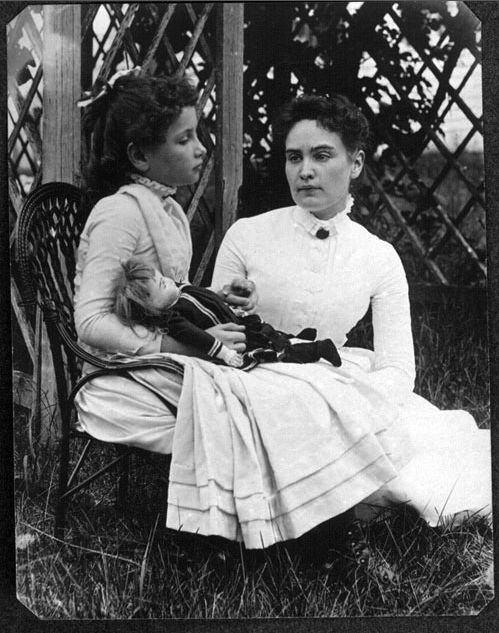
The nearby Union Cemetery seemed to be a popular place…


The historic town of Monroe, CT was originally an outgrowth of Stratford and dates back to 1720. In 1781, a dance was held here on Monroe Green for General Jean-Baptiste Donatien de Vimeur (better known as the Comte de Rochambeau) and his troops. The French forces were marching to Yorktown, VA to join the Continental Army against Lord Cornwallis' British army. The decisive victory for the colonial forces and their French comrades-in-arms forced the surrender of 7,000 British soldiers and ultimately decided the outcome of the American Revolution. Directly across the street from where the dance took place sits the imposing Washington Masonic Lodge No. 19, which was built in 1800.
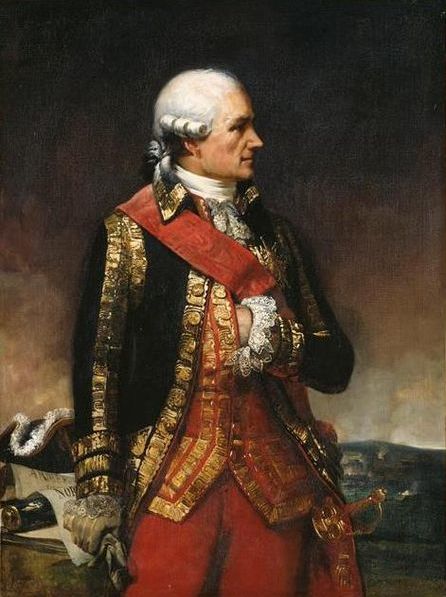

Back in the faithful BMW Z4, I soon arrived on the banks of the Connecticut River at Chester. Literally, in this case, since the road ended at the river. Fortunately, a ferry was passing by and offered to take me across the water. It turns out that the Chester-Hadlyme Ferry has been operating for more than 200 years, making it the second-oldest ferry in continuous operation in Connecticut.

Once onboard, I started looking for my next destination, on top of the Seven Sisters Hills on the opposite shore. Sure enough…



This somewhat whimsical "castle" was built in 1914 by American actor William Gillette, who had tired of living aboard his boat "The Aunt Polly." (Knowing that Gillette was a good friend of Samuel Clemens—Mark Twain—I assumed that his boat was named after Tom Sawyer's aunt. Mistaken as usual, I later learned that the inspiration for the name came from a mountain woman in South Carolina who once cared for Gillette when he was sick.) From a distance, the dwelling looks like a small, deteriorating castle. Closer up, however, it's apparent that it was built this way intentionally. Gillette called it his "Hadlyme stone heap." He paid local farmers $1.00 per truckful for the stones.


Inside the "Seventh Sister" 24-room mansion, William Gillette's cleverness was evident everywhere you looked. This is the Great Hall, with its wooden ceiling and stone walls that are covered in woven hemp. Gillette strategically placed large mirrors in this hall such that he could leave his upstairs bedroom and see who was in the hall and where they were positioned. Then he could decide the optimal moment to make his grand—theatrical, we might say—entrance.

This room was Gillette's study.

As indicated here, the guestrooms in the castle were relatively small, and Gillette's own room was even smaller.

There are 47 doors in the mansion, each carved of wood, and no two alike. Gillette designed the castle and virtually all of its furniture and other features, including the entertaining latches and locks on each of the doors and windows.


William Gillette was also acquainted with artist Louis Tiffany, several of whose lamps can be found in the castle. The castle houses far too many beautiful and interesting artifacts to describe (or even to remember), and it was fascinating to roam through the rooms. Everywhere you look are innovative light switches, paintings, Gillette's own handwritten instructions to guests regarding how to operating the heating system, etc.


The rock garden offers a commanding view of the Connecticut River (ferry and all).


William Gillette was quite an inventor, and—I think—he designed this unusual motorcycle. He is said to have earned a number of speeding tickets while riding it, and on one occasion his brakes gave out while driving down the steep road from his castle to the ferry. The good news was, the ferry boat was docked on his side of the river. The bad news was that he rode right across it and off the other end, landing in the river!
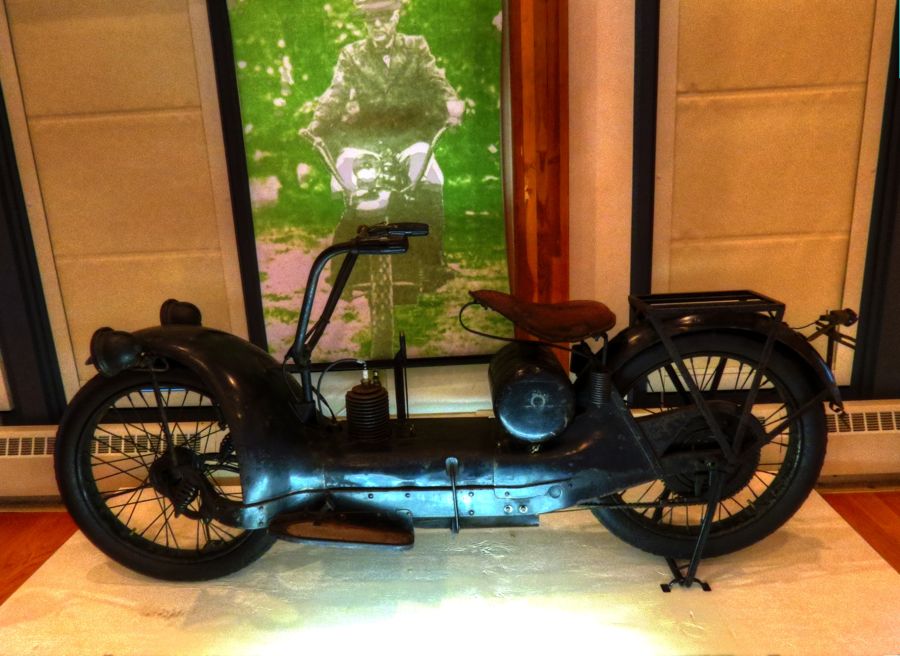
Gillette also designed and built a 3-mile, small-gauge railroad around his property, complete with locomotives, rolling stock, bridges, and tunnels. This is his electric-motored engine. (The steam engine is still awaiting restoration.)

William Gillette was best known for his portrayal of Sherlock Holmes on stage. He originated the role in Sir Arthur Conan Doyle's stage adaptation in 1899 and went on to perform it 1,300 times. He received rave reviews from Orson Welles, President Calvin Cooledge, and Sir Arthur himself. Many of the famous characteristics of Sherlock Holmes, including the "deerstalker" hat, briar pipe, magnifying glass, violin, and "Elementary, my dear Watson," were created by Gillette. He also invented numerous special effects for this play and others, earning a number of patents in the process.
Gillette married Helen Nichols in 1882, but, tragically, she died from a burst appendix only 6 years later. He was devastated, never remarried, and remained devoted to her until his own dying day. They are buried side-by-side in Farmington, CT.
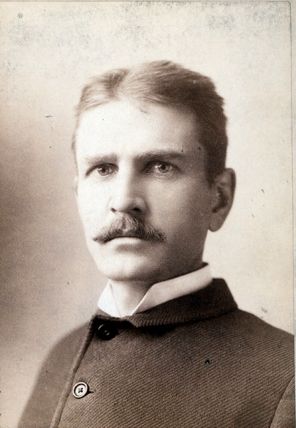
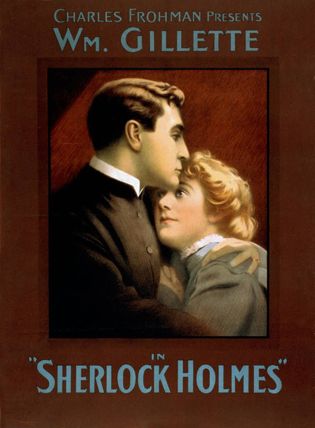

Returning to the now-empty parking lot, I remembered how I had had to make several passes before finally arriving at a satisfactory parking spot.
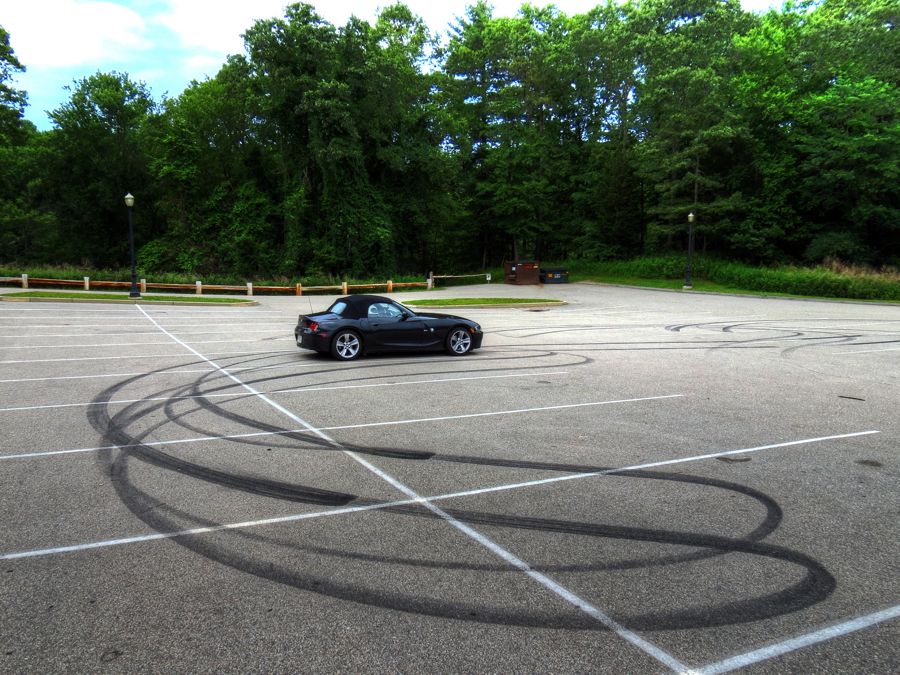
As I continued on, occasionally I would remember that I actually had to get to Cape Cod by that evening. But there were so many things to see and do on the way. Talk about the kid in the candy store… Anyway, the town of Mystic, CT was next on my list, and it proved to be all that I was expecting: Beautiful vistas…

…the famous Mystic counterweighted drawbridge…

…and, of course, the original Mystic Pizza, the inspiration for the movie of the same name starring Annabeth Gish, Julia Roberts, and Vincent D'Onofrio.

The weather was virtually perfect for this tour, with temperatures in the mid-70s and beautifully clouded skies. A great place for another photo of the ever-willing Z4, wouldn't you say?

Connecticut is a very old place, but it seemed to have surprisingly few abandoned houses, churches, or other structures. Generally speaking, it appeared as if such places were either promptly rebuilt or were torn down altogether and replaced with something else. Here's one of the few abandoned houses that I ran across:

Eventually, I crossed over into Rhode Island—a good sign that I was making at least a little progress toward Cape Cod. I had heard of Watch Hill, R.I. on a few occasions, and I knew it was home to the rich and famous. Well, I didn't know the half of it! Everywhere I turned there were houses like these (and even fancier ones that I couldn't get near).


One of my intended destinations was the historic Watch Hill lighthouse, but the road leading to it is now a private drive, suitably bedecked with warning signs, no trespassing signs, armed guards, and so forth. Oh well… here's a photo of it from the Library of Congress. The original lighthouse dated to 1745, with the current one constructed in 1856. In 1879, it became the first lighthouse in the country to be operated by a female lighthouse keeper. I was also thwarted in my effort to find the remains of the Fort Mansfield coastal artillery station. They are now located on a private country-club beach, sigh…
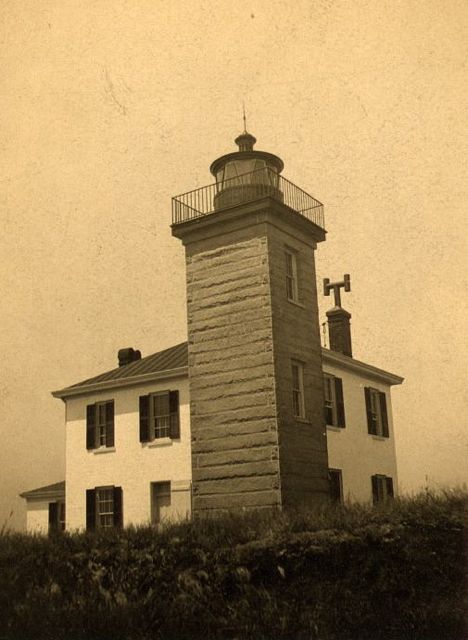
At the harbor, however, I saw one of the most stunning motor yachts I've ever run across. No, make that the most stunning yacht. Later on, a bit of research revealed that this was Aphrodite, built in 1937 as a "commuter yacht to ferry financier John Hay Whitney back and forth to New York City from his home on Long Island. Guests aboard ship included Fred Astaire, Sir Laurence Olivier, Spencer Tracy, Katherine Hepburn, Henry Ford II, Nelson Rockefeller, and a young Shirley Temple. Mr. Whitney also lent Aphrodite to the Coast Guard during World War II to serve as part of the shore patrol. Fitted with even larger engines, the 74-foot boat could hit 60 knots! Eventually, this beautiful vessel fell onto hard times and by the early 1970s was sitting on land with broken bulkheads and planking and with weeds growing through it. Fortunately, in 2003 the Brookline Boat Yard commenced a painstaking, "water-up" renovation with outstanding results. Long may she sail!
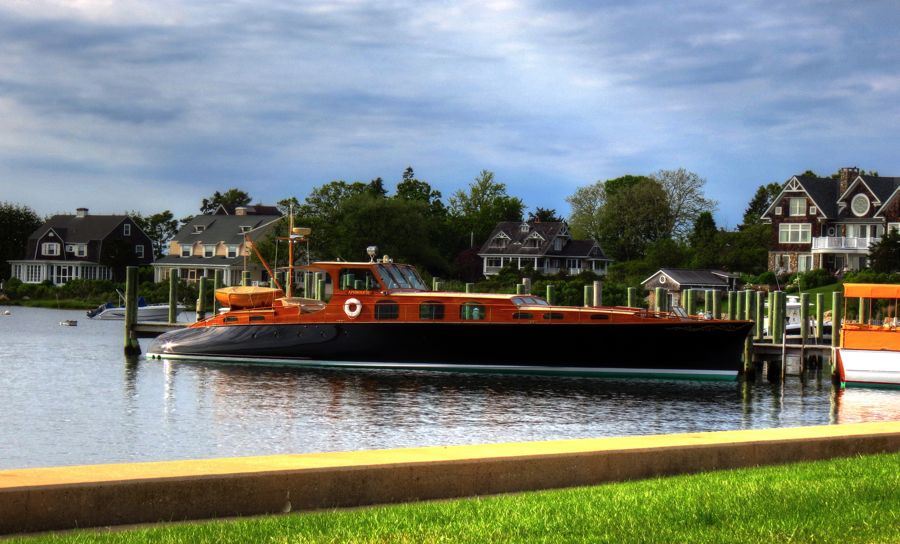
Even the automobile garages in Watch Hill sported impressive-looking weathervanes. This one appears to serve regularly as a perch for birds while they scarf down minnows, bugs, and Unidentified Flying Dinners.

As the shadows lengthened, I had time for just a few more stops. Everyone's heard of the "rocky New England coastline," and it's no exaggeration. But at least it's scenic!

Back in the 1880s, Narragansett was home to the mammoth Narragansett Pier Casino. The gambling and other attractions drew visitors from all over the country, and the casino was the social center of the entire town. Sadly, a fire broke out in the nearby Rockingham Hotel on September 12, 1900 and soon spread to the casino. When all was said and done, only the walls of the casino's "Tower Entrance" remained standing. They are still standing today, despite the fire and occasional hurricanes. And as large as the Towers are, they are only a small part of what had been the casino. Hard to imagine (although the period postcard from Narragansett Pier Postcard History provides an idea).

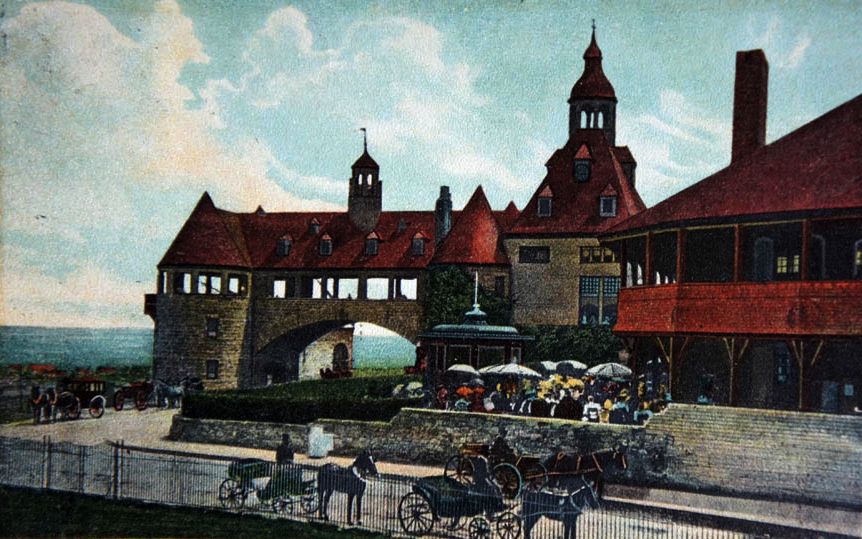
From Narragansett, I transfered to highways and interstates, motoring quickly to East Falmouth on Cape Cod. I arrived worn out but happy, just in time to help other guests' unload their luggage! All in all, this was the right way to get to Cape Cod, with at least a semester's worth of history credits learned along the way. The Z4 never missed a beat and even achieved 28 mpg in the process. Best of all, I'd started my vacation off with 2 days of fun touring. What more could I ask for?
Rick F.


